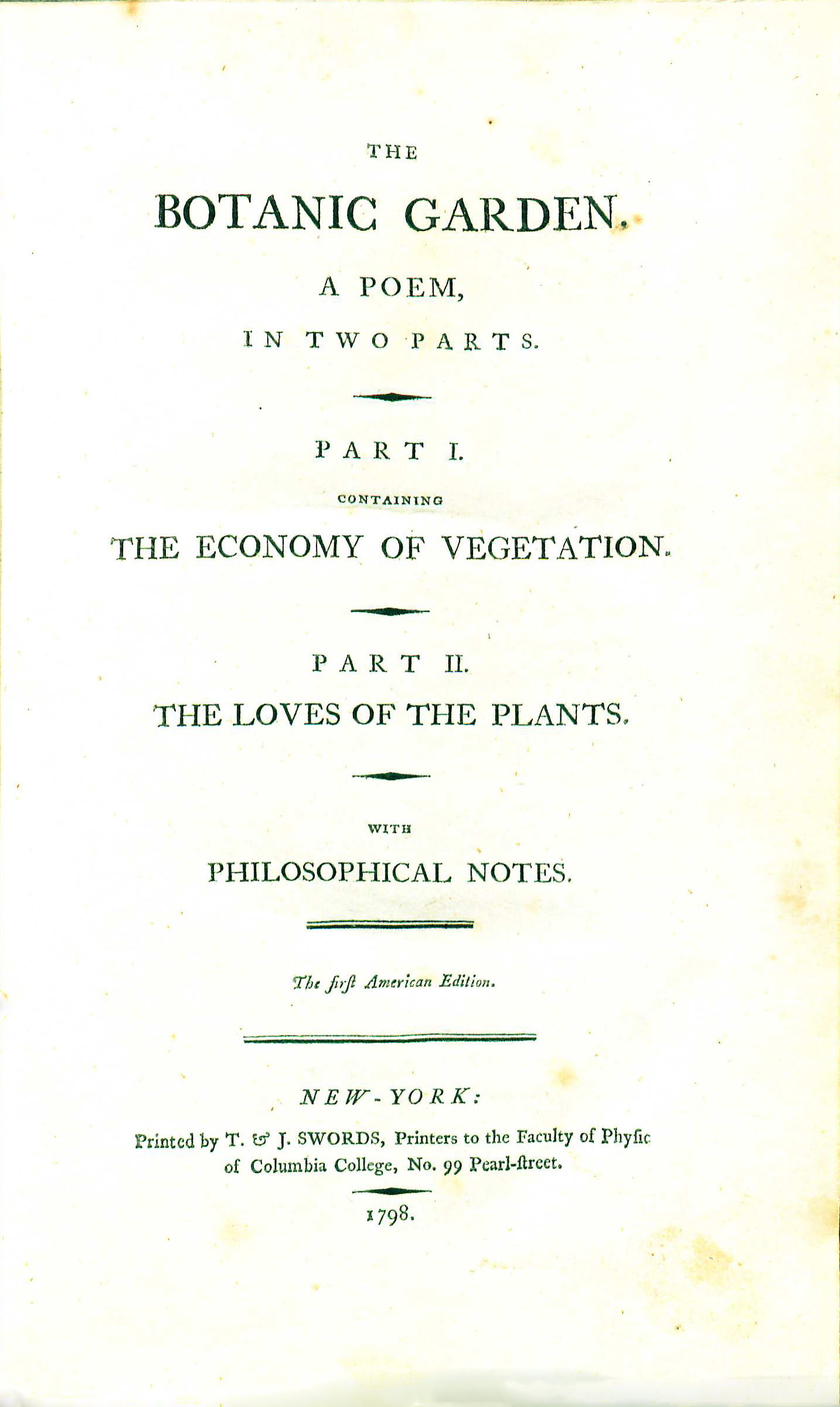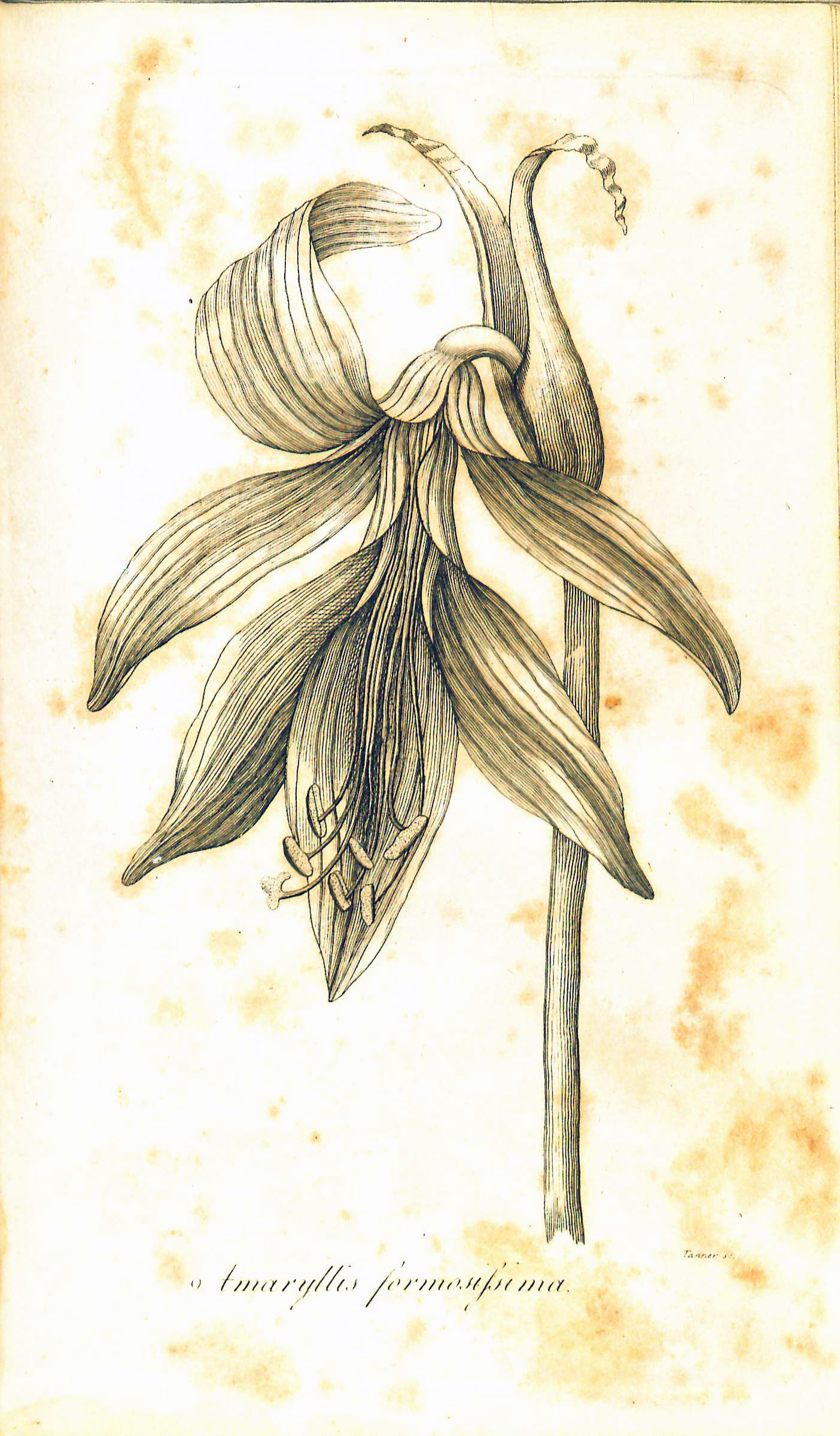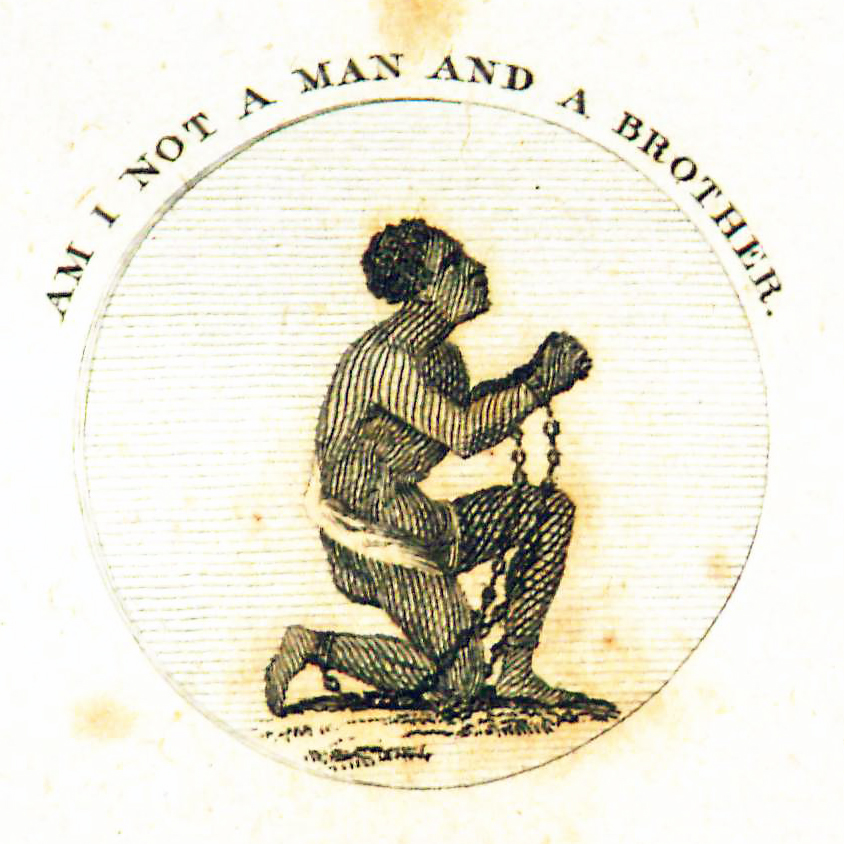Difference between revisions of "Botanic Garden"
Lewarkentin (talk | contribs) |
Dbthompson (talk | contribs) (→Description of the Wolf Law Library's copy) |
||
| Line 29: | Line 29: | ||
Bound in full leather with maroon label on the spine and stamped in gold. Manuscript notes on rear free endpaper and rear pastedownPurchased from Riverby Books. | Bound in full leather with maroon label on the spine and stamped in gold. Manuscript notes on rear free endpaper and rear pastedownPurchased from Riverby Books. | ||
| − | View the record for this book in [https://catalog.swem.wm.edu/law/Record/3466230 William & Mary's online catalog.] | + | Images of the library's copy of this book are [https://www.flickr.com/photos/wolflawlibrary/sets/72157637448661503 available on Flickr.] View the record for this book in [https://catalog.swem.wm.edu/law/Record/3466230 William & Mary's online catalog.] |
==See also== | ==See also== | ||
Revision as of 11:03, 28 October 2015
by Erasmus Darwin
| The Botanic Garden | |
|
Title page from The Botanic Garden: a Poem, in Two Parts, George Wythe Collection, Wolf Law Library, College of William & Mary. | |
| Author | Erasmus Darwin |
| Published | New-York: Printed by T. & J. Swords |
| Date | 1798 |
| Edition | First American |
| Language | English |
| Pages | 7, [vii]-xi, 1 l., [2], 256, x, [11]-146, [2] |
| Desc. | 8vo (22 cm.) |
| Location | Shelf M-3 |
Darwin’s first major work of literature, published in 1789, was a didactic poem about the classification of plants in The Loves of the Plants. In this poem, Darwin attributes human characteristics and feelings to plants in sexually charged, abstract language.[3] In 1791, he joined The Loves of the Plants with a second part, The Economy of Vegetation, in a volume entitled The Botanic Garden. The Economy of Vegetation draws analogies between mechanics, the industrial process, and natural philosophy, offering “a theory of biological learning which included both mind and body.”[4]
Darwin continued to probe the relationship between medicine, mechanics, philosophy, and poetry in various works that focused on history, inventions, and gender politics until his death in 1802. In addition to his scientific work and literature, Darwin designed many mechanical instruments that reveal his innovative mind. His work and viewpoint influenced his grandson, the famed Charles Darwin.[5]
Evidence for Inclusion in Wythe's Library
Listed in the Jefferson Inventory of Wythe's Library as Darwin’s Botanic garden. 8vo. and given by Thomas Jefferson to his son-in-law, Thomas Mann Randolph. George Wythe's Library[6] on LibraryThing lists the 1798, first American edition, noting "Probable edition. Most of the editions published prior were in quarto." The Brown Bibliography[7] concurs, perhaps basing the choice on the copy Thomas Jefferson sold to the Library of Congress in 1815.[8] The Wolf Law Library purchased the first American edition.
Description of the Wolf Law Library's copy
Bound in full leather with maroon label on the spine and stamped in gold. Manuscript notes on rear free endpaper and rear pastedownPurchased from Riverby Books.
Images of the library's copy of this book are available on Flickr. View the record for this book in William & Mary's online catalog.
See also
References
- ↑ Maureen McNeil, “Darwin, Erasmus (1731–1802)”, Oxford Dictionary of National Biography (Oxford University Press, 2004- ), accessed September 19, 2013. Unless otherwise noted, all biographical details are from this source.
- ↑ W.E. Snell, “Erasmus Darwin, Physician and Poet,” The British Medical Journal, 1, No. 5795 (1972), 303-5.
- ↑ John Valdimir Price, "Darwin, Erasmus (1731-1802)," Continuum Encyclopedia of British Philosophy, 2 (2006), 789-790.
- ↑ McNeil, “Darwin, Erasmus (1731–1802).”
- ↑ Snell, “Erasmus Darwin, Physician and Poet,” 304.
- ↑ LibraryThing, s. v. "Member: George Wythe", accessed on November 13, 2013.
- ↑ Bennie Brown, "The Library of George Wythe of Williamsburg and Richmond," (unpublished manuscript, May, 2012) Microsoft Word file. Earlier edition available at: https://digitalarchive.wm.edu/handle/10288/13433
- ↑ E. Millicent Sowerby, Catalogue of the Library of Thomas Jefferson 2nd ed. (Charlottesville: University Press of Virginia, 1983), 1:487, [no. 1072].


